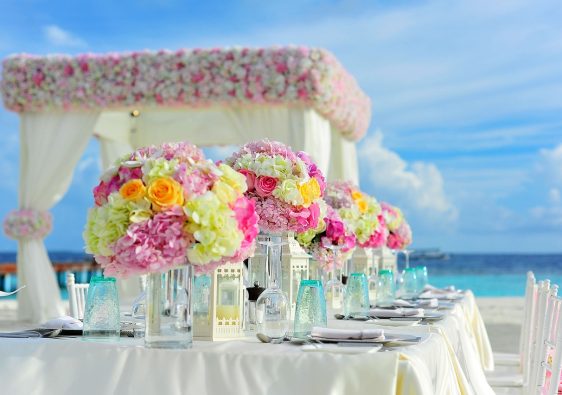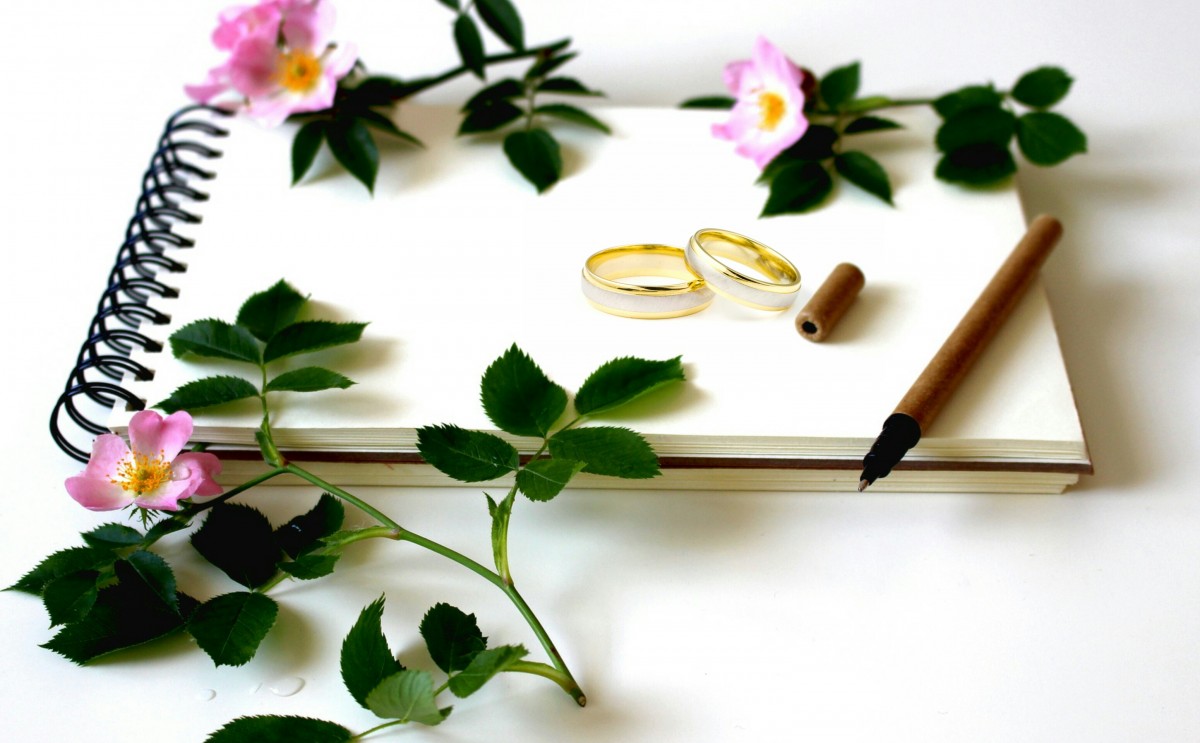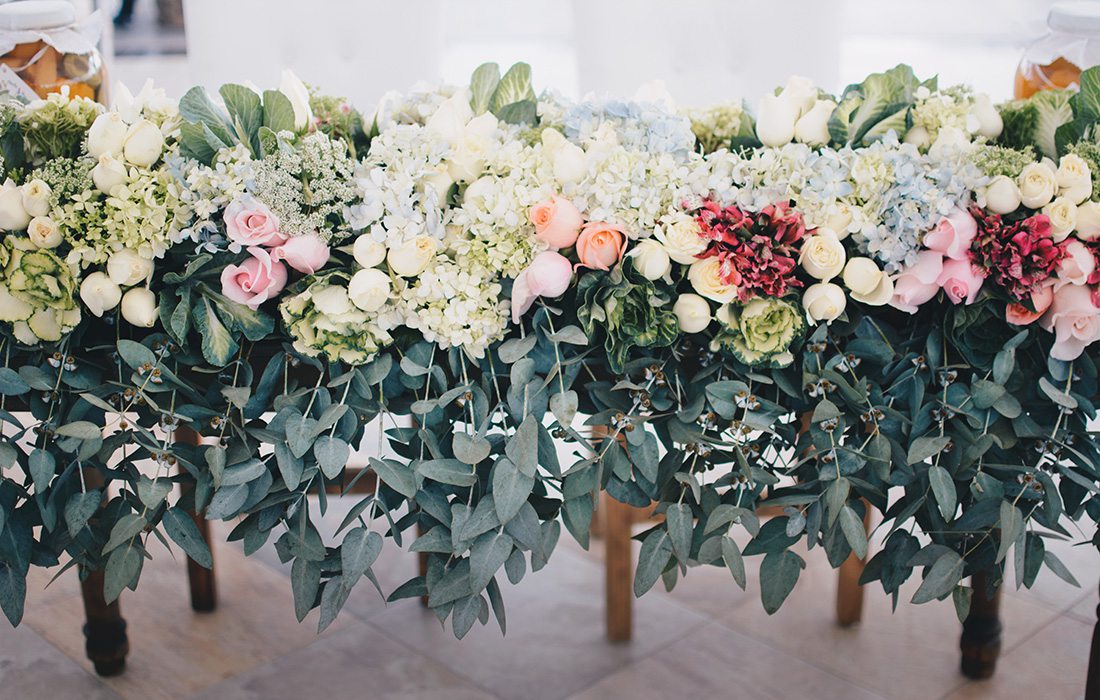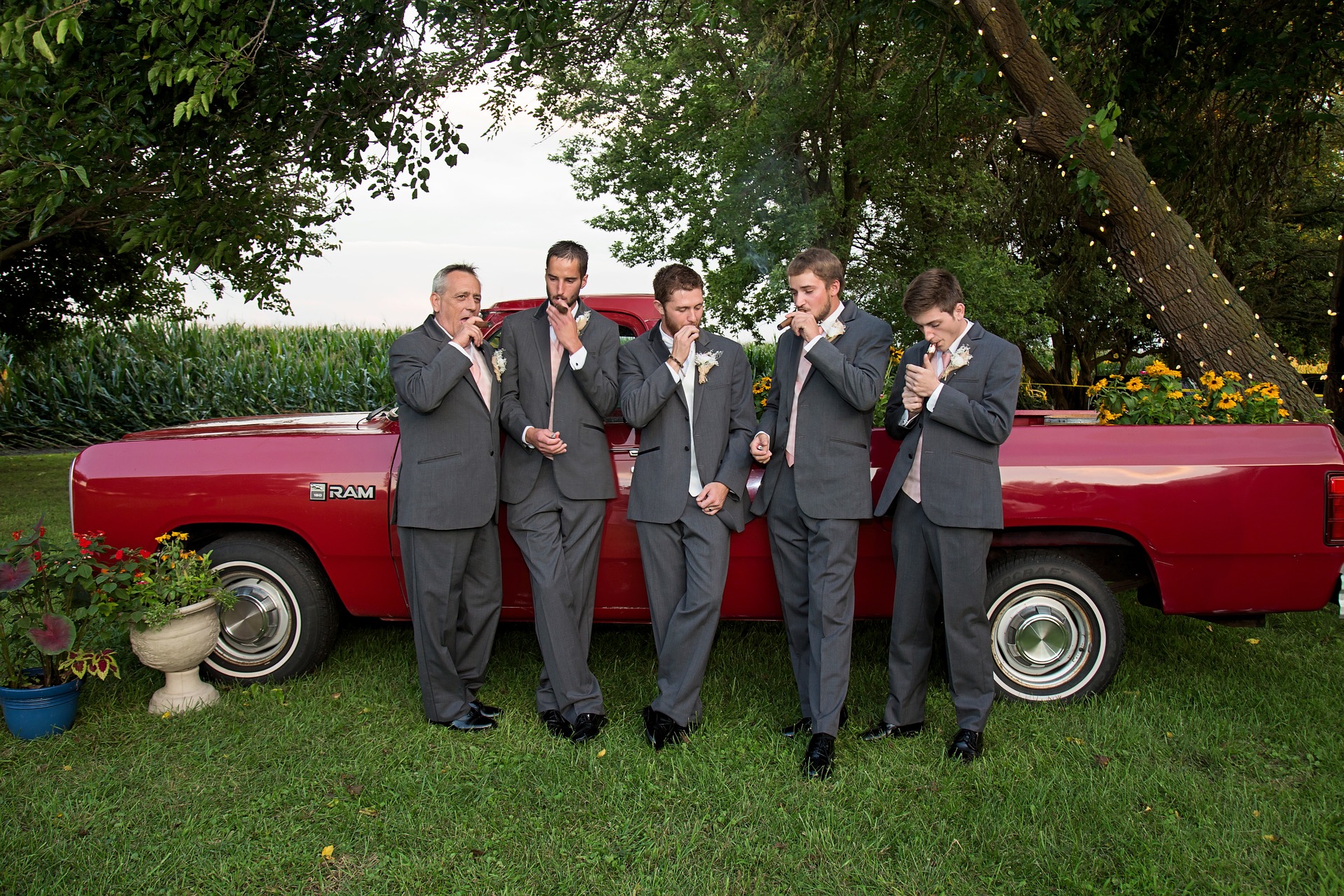Indian Wedding: Process and Customs
Summary
– Rituals preceding the Hindu wedding
– Indian wedding: the course of the D-day
– Dowry in the Indian wedding
Marriage is one of the rites of passage in Hindu customs. It is the most important of all, and it is most often celebrated with great pomp.
Protocol and customs related to Indian marriage
The family most often chooses spouses according to caste and social level. Girls are married between the ages of 19 and 26, and men are married at an average age of 26.
Rituals preceding the Hindu marriage
Before sealing the union of the newlyweds, they and their families must perform several acts:
– Talks between the father of the bride and the groom are made.
– The bride plants 9 seeds that the D-day must germinate to symbolize fertility in marriage.
– The Tilak ceremony where the male members of the bride’s family go to the groom’s house to offer him gifts and apply a vermilion paste to his forehead. The groom’s family responds by sending gifts to the bride’s family.
– The engagement where the future spouses exchange gold rings.
– The pitthi and mehndi where the bride and groom are covered with henna tattoos and a paste made of pea flour, turmeric, oil or water to purify them. The families then set a date for the ceremony.
Good to know: according to tradition, the bride can only resume her household activities once her wedding henna has been completely removed.
Indian wedding: the D-day process
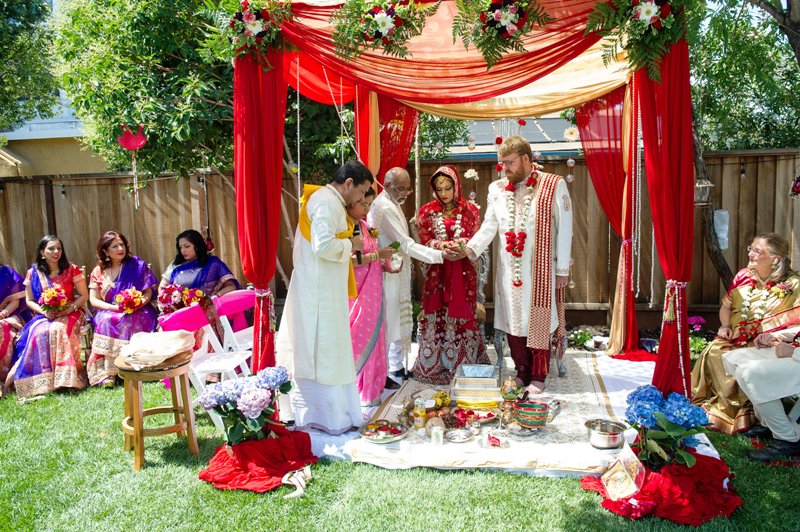
The D-day is also punctuated by many rituals that should be observed at the risk of compromising the longevity of the wedding. The wedding begins as follows
– the arrival of the groom, on horseback or elephant or in a luxury car;
– He waits for the bride to put a garland of flowers around her neck.
The priest then performs the rituals or “mandap” in the presence of the bride and groom and their parents. These take place in the following manner:
– A prayer is first dedicated to Ganesh, the god of luck and wisdom.
The spouses’ hands are joined, but they are separated by a sheet and cannot yet see each other.
– A paste made of cane sugar and cumin with positive virtues is placed on their heads before dropping the sheet.
– The groom will tie a rope made of herbs and braid around the bride’s waist to support her in her new responsibilities.
– He then places two gold necklaces around her neck, symbols of the commitment, protection and security he offers to the bride.
– The sashes of the bride and groom are tied together to symbolize the longevity of their union.
– The bride and groom send rice to each other and then go around the sacred fire 7 times to conclude the ceremony.
After the mandap, the wedding festivities occur where the guests are invited to eat, drink and dance in honour of the new couple.
Dowry in Indian marriage
The dowry or the fact that the bride’s family pays a certain amount of money to the groom’s family for the wedding is universal in India.
Its amount depends on :
– the caste to which the groom belongs;
– his place in the family: elder, younger, etc.;
– his position in Indian society.
Good to know: The dowry is not given in the form of money but of gifts.
Hope you have liked this post. This blog is incomplete without your participation; please do not hesitate to share your thoughts in the comment section below.

